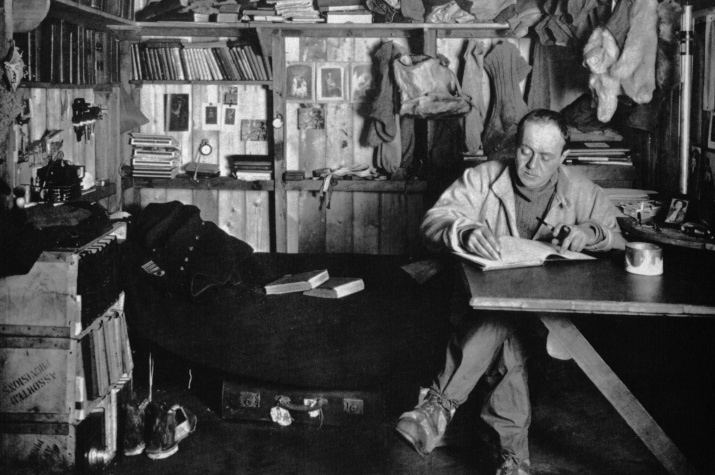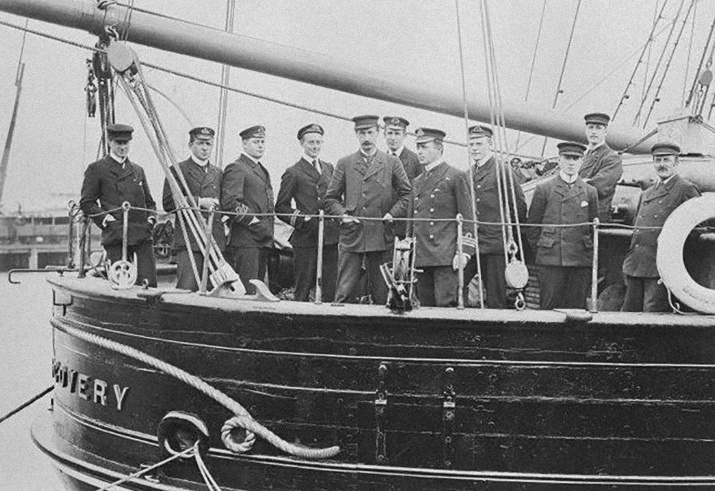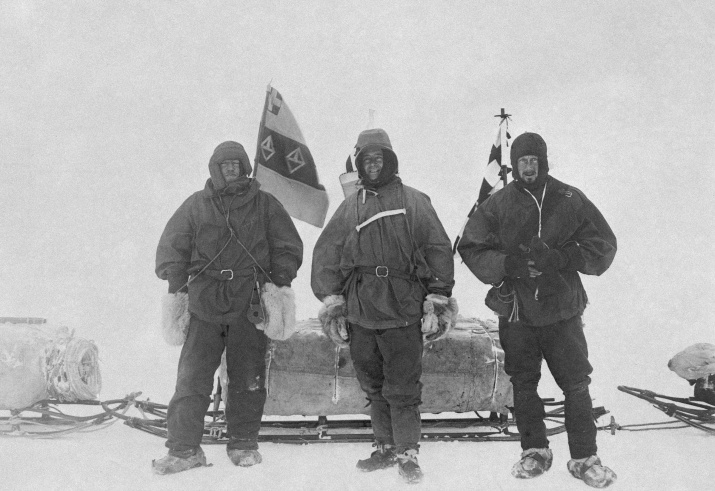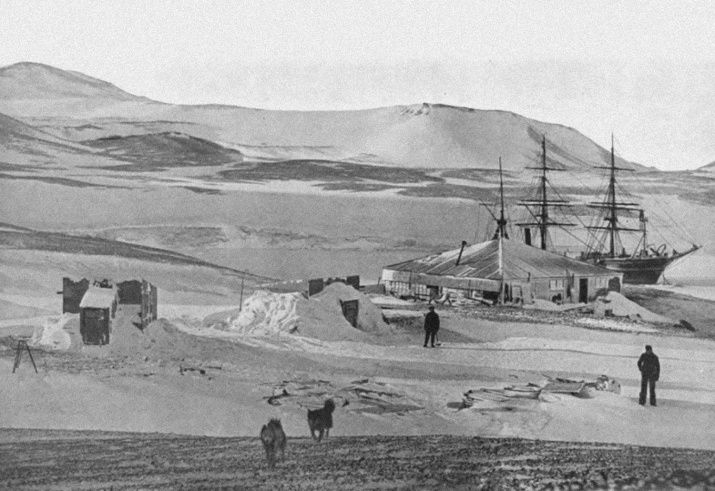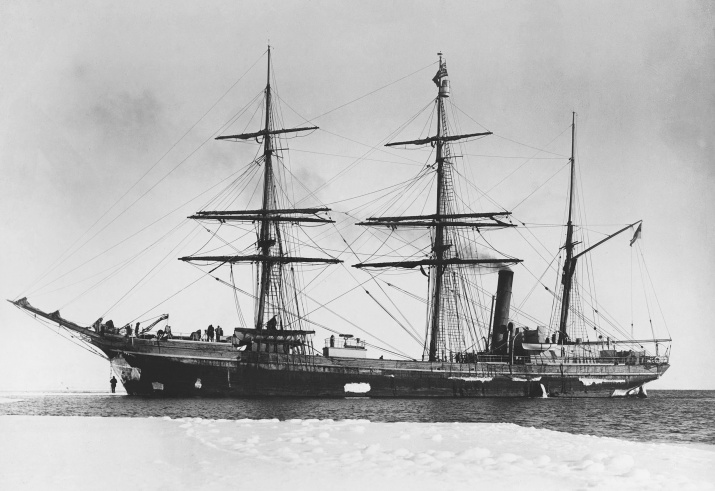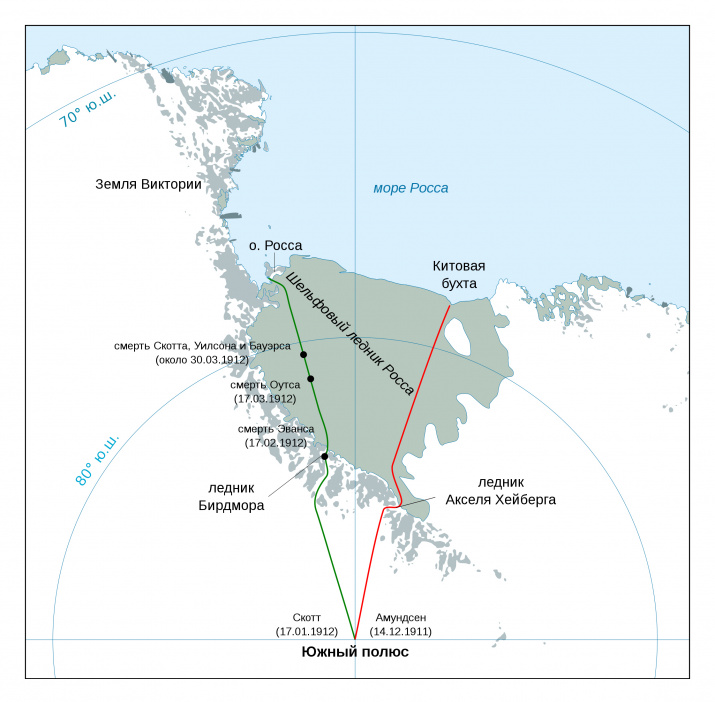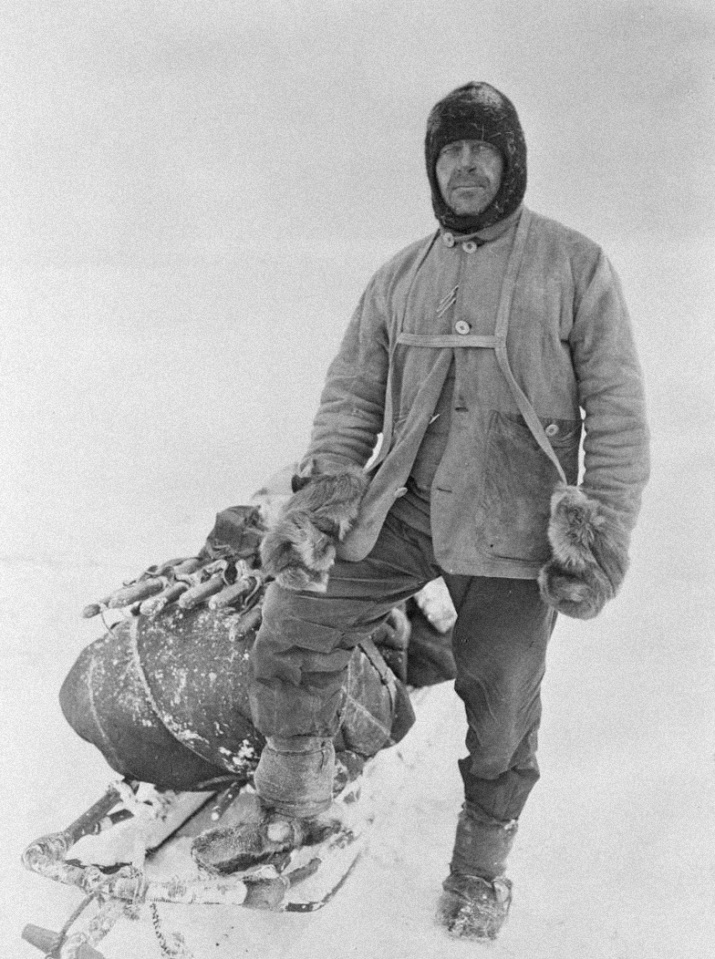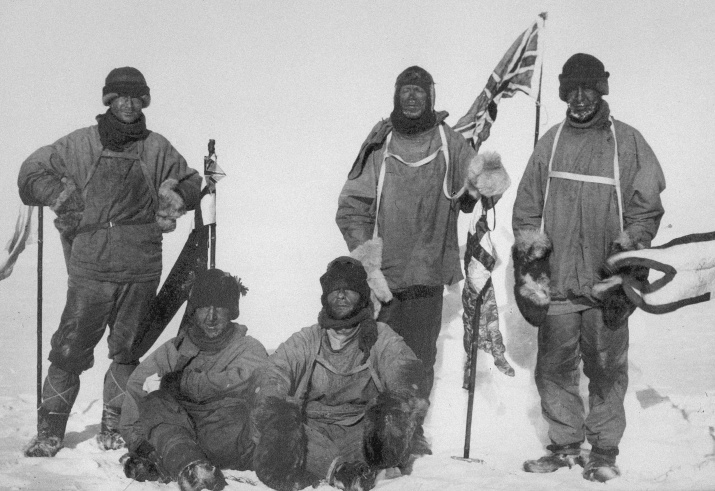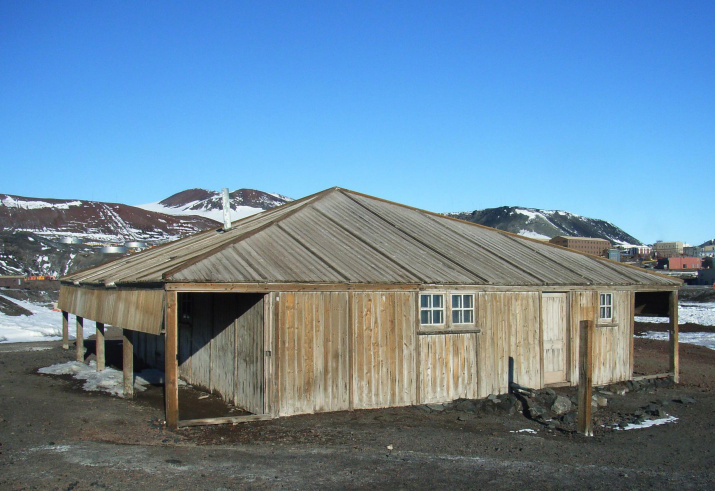English polar explorers dreamed of being the first to reach the southernmost point of the globe, but they were one step behind the team of the famous Norwegian Roald Amundsen. They hoped to return home and bring back the results of scientific observations, as well as a geological collection, but they remained forever in the ice, just a few miles from the depot where food and fuel supplies were waiting for them.
On November 12, 1912, the members of the “Terra Nova” expedition exploring Antarctica found a tent with three frozen bodies, Sir Robert Scott and two of his companions, with whom he had gone to the South Pole on January 4. There were five of them in total — two more had died earlier. Under Scott's shoulders was a bag with farewell letters and diaries of the participants of the expedition. Sir Robert made his last entry on March 29.
"We had fuel to make two cups of tea apiece and bare food for two days on the 20th. Every day we have been ready to start for our depot 11 miles away, but outside the door of the tent it remains a scene of whirling drift. I do not think we can hope for any better things now. We shall stick it out to the end, but we are getting weaker, of course, and the end cannot be far. It seems a pity, but I do not think I can write more."
From the diary of Robert Scott
First experience
Robert Scott was no stranger to polar exploration. He first went to Antarctica in 1901 — the president of the Royal Geographical Society, Clements Markham, entrusted him with the leadership of the British National Antarctic Expedition. A Royal research vessel, the three-masted “Discovery” barque, was specially prepared for it. Alas, its seaworthiness turned out to be far from ideal — it was absolutely unsuitable for long ocean crossings, as well as for staying in ice. But in those days there was almost no experience of traveling to Antarctica, everything had to be found out already in the process.
"But at this time our ignorance was deplorable; we did not know how much or what proportions would be required as regards the food, how to use our cookers, how to put up our tents, or even how to put on our clothes. Not a single article of the outfit had been tested, and amid the general ignorance that prevailed, the lack of system was painfully apparent in everything."
From the memoirs of Robert Scott
Despite all the difficulties, the expedition achieved impressive scientific results. Its participants spent two winters in the ice, advanced about 400 km along the ice plateau of Victoria Land, discovered King Edward VII Land (now King Edward VII Peninsula), determined the nature of the Ross Ice Shelf, which turned out to be a shelf glacier.
In addition, the explorers had advanced farther south than anyone before them. Even then Scott made an attempt to get to the pole. Together with two companions, Edward Wilson and Ernest Shackleton, he set out for the south on November 2, 1902. But severe snowstorms, lack of food and kerosene forced them to turn back on January 1. By this time, they had reached 82°16' S.
"We are already beyond the utmost limit to which man has attained: each footstep will be a fresh conquest of the great unknown. All our charts of the Arctic Regions show a plain white circle beyond the eightieth parallel… and even the meridional lines end at the circle. It has always been our ambition to get inside that white space, and now we are there the space can no longer be a blank; this compensates for a lot of trouble."
From the diary of Robert Scott
On September 10, 1904, the expedition returned to Portsmouth, England. Scott's name thundered all over the world: he was awarded Gold medals by geographical societies of England, Scotland, Philadelphia, Denmark, Sweden and the USA. King Edward VII made him a Commander of the Royal Victorian Order and awarded him the Polar Medal "Antarctica 1902-1904". The Russian Geographical Society also did not stand aside, and the British polar explorer became an honorary member of the IRGS.
Polar Race
Meanwhile, the South Pole remained unconquered. There were plenty of people willing to get to it — among other things, it was a matter of state prestige. The attempts to claim the lead were made by the French, who prepared the expedition of Jean-Baptiste Charcot, the Japanese, who equipped the team of Nobu Shirase, the Germans, who planned to send Wilhelm Filchner's crew of explorers to Antarctica. But Scott's most serious competitors were the Australian expedition of Douglas Mawson (which he prepared together with the first companion of the Briton, Shackleton), and the American Robert Peary. The latter had already visited the North Pole and planned to get to the South Pole. It was he who coined the term "polar race".
Robert Scott was also eager to "reach the South Pole and to secure for the British Empire the honor of this achievement.” In the summer of 1910, the last preparations for the second Antarctic expedition were completed. Scott decided to use Manchurian horses and motorized sledges as Antarctic transport — he disliked sledge dogs, although he had not gotten rid of them completely. As a result, the “Terra Nova” vessel, on which the expedition members were traveling across the Atlantic, turned out to be pretty overloaded: three containers with snowmobiles and four horses were crowded on the upper deck of the barque, fifteen more were on the accommodation deck, crowding people. In order to provide livestock with feed, they even had to use some of the tanks intended for fresh water for it.
On October 12, 1910, the “Terra Nova”, after a 40-day ocean crossing, reached Melbourne, where Scott was stunned by a telegram from the brother of the famous polar explorer Roald Amundsen. The latter was just about to go to the North Pole on his schooner "Fram" – the entire world press was writing about his preparations for the Arctic drift. That made the message more unexpected: "Beg leave to inform you Fram proceeding Antarctica. Amundsen." So the most serious contender for victory joined the "race".
On January 4, 1911, the “Terra Nova” reached the Ross Sea, and preparations for wintering began. The sledge that the polar explorers decided to use when unloading turned out to be too heavy and fell through the ice, but otherwise things were progressing well. Soon a "Scott Hut" with outbuildings for horses and dogs appeared on Cape Evans, provisions and equipment were unloaded from the ship. It was time to split into two groups: a group led by Victor Campbell was to go on a barque along the Great Ice Barrier to the King Edward VII Land. Having arrived at the Bay of Whales on February 4, the British found Amundsen's "Fram" there. In order not to provoke conflict situations, they did not set up camp near the Norwegian base — although Amundsen suggested it to them, noting that Antarctica is open to everyone. As a result, Campbell's group returned to Victoria Land, where he was conducting scientific research until 1912.
Scott and the remaining with him 12 people went to 80° S to set up food depots at certain intervals for the transition to the South Pole, which was scheduled for spring. This work lasted from the end of January to the beginning of April. On February 22, Scott received a message from Campbell.
"A letter from Campbell setting out his doings and the finding of Amundsen established in the Bay of Whales. … One thing only fixes itself definitely in my mind. The proper, as well as the wiser, course for us is to proceed exactly as though this had not happened. To go forward and do our best for the honor of the country without fear or panic. There is no doubt that Amundsen's plan is a very serious menace to ours. He has a shorter distance to the Pole by 60 miles—I never thought he could have got so many dogs safely to the ice. His plan of running them seems excellent. But, above and beyond all, he can start his journey early in the season—an impossible condition with ponies."
From the diary of Robert Scott
One step away from the goal
Five people went to the South Pole: Edward Wilson, Edgar Evans, Lawrence Oates, Henry Bowers and Robert Scott himself. Bowers joined in the group at the last moment, so he had not been taken into account when the equipment with provisions were prepared – all of it had been prepared for four, even skis, without which Lawrence Oates was left in the end. Nevertheless, the polar explorers stubbornly moved farther south.
On January 16, it became obvious that they would not be the first at the pole: "Half an hour later he detected a black speck ahead. Soon we knew that this could not be a natural snow feature. We marched on, found that it was a black flag tied to a sledge bearer; near by the remains of a camp; sledge tracks and ski tracks going and coming and the clear trace of dogs’ paws – many dogs. This told us the whole story. The Norwegians have forestalled us and are first at the Pole. It is a terrible disappointment!"
Two days later, the travelers found the opponent's tent, with the note from Amundsen waiting for them inside. The note listed the five participants of the expedition and indicated the date — December 16.
The disappointment was difficult to convey in words: "Great God! this is an awful place and terrible enough for us to have labored to it without the reward of priority." Moreover, the Norwegian left Scott a note asking him to deliver his letter to King Haakon — this letter was later found at the last polar explorers' camp along with others. The pole was just around the corner, and they had arrived there. But a month later than Amundsen's group.
"We built a cairn, put up our poor slighted Union Jack, and photographed ourselves – mighty cold work all of it … We carried the Union Jack about 3/4 of a mile north with us and left it on a piece of stick as near as we could fix it. I fancy the Norwegians arrived at the Pole on the 15th Dec. and left on the 17th, ahead of a date quoted by me in London as ideal, viz. Dec. 22. It looks as though the Norwegian party expected colder weather on the summit than they got; it could scarcely be otherwise from Shackleton’s account."
From the diary of Robert Scott
The return journey was difficult for the travelers. The first to pass was Evans, whom Scott initially referred to in his diaries as "a huge figure." Already on the way to the pole, he had seriously injured his arm, when the group was walking back, he "suddenly disclosed a huge blister on his foot." Plus, he fell into a crevasse and badly bruised his head — he may have received a concussion. Every day Evans lagged more and more behind his colleagues who had to wait for him, and in the end he was completely exhausted: " I was … shocked at his appearance; he was on his knees with clothing disarranged, hands uncovered and frostbitten, and a wild look in his eyes. Asked what was the matter, he replied with a slow speech that he didn’t know, but thought he must have fainted. We got him on his feet, but after two or three steps he sank down again," Scott wrote on February 17. Evans died the same day.
A few days later, it was the turn of Oates, who froze off his feet. He held on to the last, not complaining and moving forward: "Oates … is wonderfully plucky, as his feet must be giving him great pain. He makes no complaint, but his spirits only come up in spurts now, and he grows more silent in the tent." On March 11, Scott ordered Wilson, who was in charge of the first aid kit, to distribute 30 opium pills to everyone, and to keep a tube of morphine for himself, so that, if necessary, he could end his suffering.
"Friday, March 16, or Saturday, the 17th. Lost track of dates, but think the last correct. Tragedy all along the line. At lunch, the day before yesterday, poor Titus Oates said he couldn’t go on; he proposed we should leave him in his sleeping-bag. That we could not do, and induced him to come on, on the afternoon march. In spite of its awful nature for him he struggled on and we made a few miles. At night he was worse and we knew the end had come. …
Oates’ last thoughts were of his Mother, but immediately before he took pride in thinking that his regiment would be pleased with the bold way in which he met his death. We can testify to his bravery. He has borne intense suffering for weeks without complaint, and to the very last was able and willing to discuss outside subjects. He did not – would not – give up hope to the very end. He was a brave soul. This was the end. He slept through the night before last, hoping not to wake; but he woke in the morning – yesterday. It was blowing a blizzard. He said, ‘I am just going outside and may be some time.’ He went out into the blizzard and we have not seen him since."
From the diary of Robert Scott
The situation of the polar explorers became desperate: there was, again and again, a shortage of kerosene in the set up depots — apparently, it had evaporated or flowed out of leaky cans. Problems began with hot food, and there was not enough food itself. As a result, the fuel ran out, and a storm prevented them from getting to the next depot, which was only 17 km away. The last entry appeared in Scott's diary.
The leader of the expedition lasted the longest — the bodies of the others lay in neatly closed sleeping bags, while his own was open, his hand was resting on the body of his best friend, Wilson. The members of the expedition led by Edward Atkinson, who discovered the last camp of the conquerors of the pole, removed the tent poles, turning it into a funeral shroud, and erected a pyramid of snow over the place of death, crowning it with a cross made of skis.
Another cross was made of mahogany by the ship carpenters of the “Terra Nova”. It was installed on Observer Hill, overlooking Scott's first base. The cross is engraved with a quote from Alfred Tennyson's poem "Ulysses": "To strive, to seek, to find, and not to yield."
On February 10, 1913, the ship came to the port of Oamaru in New Zealand, and the story of Robert Scott travelled around the world. "Almost every Briton alive has been prouder these last days because a message from a tent has shown him how the breed lives on," the famous author of "Peter Pan" James Barrie wrote about this event. Even though Sir Robert Scott was not the first at the South Pole, this does not detract from his achievements.
Interesting facts
- In New Zealand, in Christchurch, there is a monument to Robert Scott made by his wife Kathleen Scott, who was a student of the sculptor Auguste Rodin.
- Money for the expedition was collected from donations and from private funds; the appeal for the public was made by the author of the Sherlock Holmes stories, Sir Arthur Conan Doyle.
- Scott's team had two Russians: Anton Omelchenko, a groom, and a musher Dmitry Girev. Both returned safely from the expedition.
- James Barrie was a close friend of Scott’s, the latter even named his son Peter after the hero of his book.
- Robert Scott became one of the prototypes for Captain Tatarinov in Kaverin's book "Two Captains". Just like him, the book character addresses a farewell letter to his wife with the words "to my widow". The motto "To strive, to seek, to find, and not to yield" was also given to the characters of the book by Scott, more precisely, his memorial cross.
- The snow pyramid, under which three polar explorers rest, is located on the Ross Ice Shelf, that is gradually moving towards the sea. Storms and snowstorms have built up an icy shell over it. In 2001, researcher Charles Bentley announced the estimated calculations: there were already 23 meters of ice above the tent, and it itself had "moved" 48 kilometers from the original point. According to the researcher, the glacier with the British dead can reach the sea and become an iceberg in about 275 years.
Olga Ladygina

